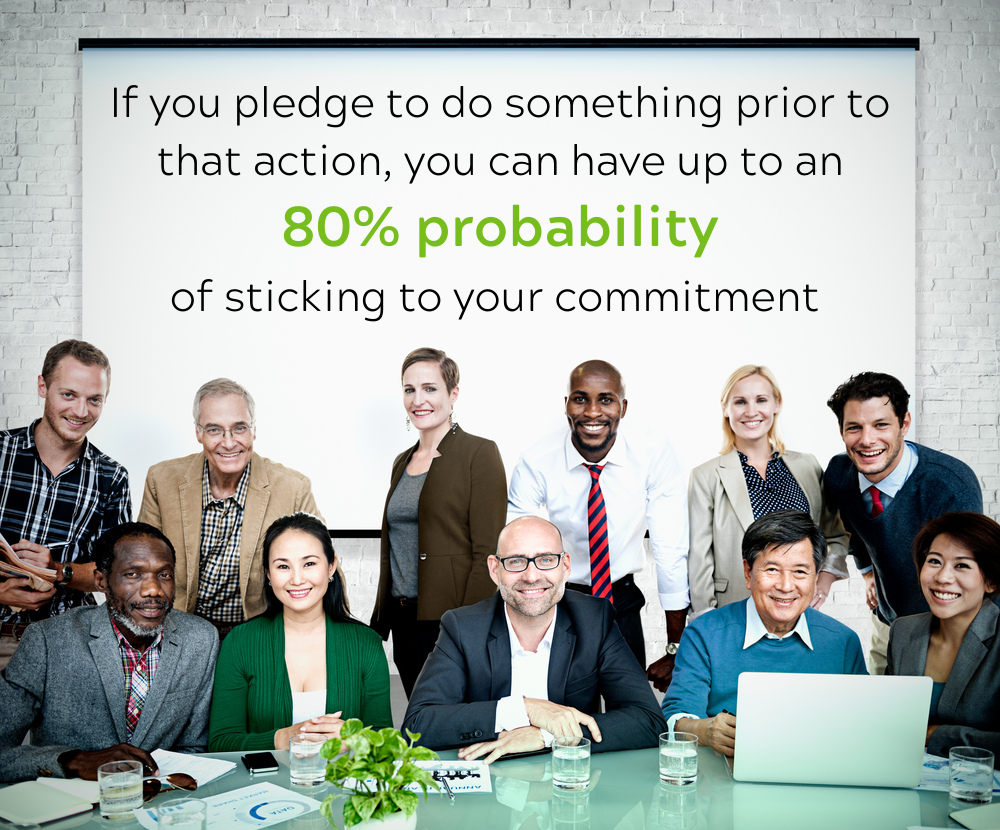Why Pledges Work
A pledge is a pre-commitment. Pre-commitments are a promise to do an action. By making some sort of pledge or vocal commitment, or even a commitment in your head to doing something, it increases the probability that you actually do that action. For example, if you sign the Global Climate Pledge and commit to planting your own garden, signing the pledge will make it harder for you to decommit.
The earlier you make this commitment, the better. Theorized and tested by the Norwegian social scientist Jon Elster, you can have up to an 80% probability of sticking to your commitment if you pledge to do it prior to that action (1).
At the Global Climate Pledge, we are driven to create an inclusive climate movement that all individuals, businesses, and organizations can identify with. In pledges where individuals feel connected to a group, such as a business or an organization, they are twice as likely to commit (2). Signing the Global Climate Pledge as a group further ensures group members will take actions and hold each other accountable.
One study published by BioMed Central researched the use of pledges in educational and action-based campaigns (3). During the study, one individual stated, “I think it’s because when I was looking at [the campaign] and thinking that it was such a good idea that people were taking responsibility for their own actions and that we could all be part of it – I suppose it’s feeding into this kind of Big Society idea.” Here, the participant is further identifying the importance of feeling connected to the larger group and mission of an initiative.
Studies Show Pledges Have a Long-Term Impact
A study published in 2017 tested the effectiveness of environmental pledges in sustainability education (4). The study followed a set of young adults who were in school to become lower education science teachers as they made environmental pledges. All teachers who participated pledged to protect the environment and its resources, committing to actions such as limiting the length of their showers.
Each participant quantified their impact. One teacher who pledged to not flush the toilet after going “number one” kept track of the number of times they didn’t flush. They ended up not flushing the toilet 477 times over the course of 13 weeks. Since their toilet uses 5 liters per flush, they calculated that they saved 2,385 liters of water.
After the study ended and some time had passed, the researchers reached out to 30 of the teachers that participated to learn more about how the study had impacted them in the long run. Of the 30 teachers, ten of them replied. Of the ten, eight kept their sustainability pledge and seven had incorporated some form of the pledge within their own teaching. These teachers not only maintained their commitment to bettering the environment, but they were maximizing their impact by getting others to do so too!
Using Pledges as a Business or Organization
One study looked at how pledges are used in the workplace, such as health pledges where staff members would commit to staying active and healthy (5). Some pledges include competitive factors so coworkers can see who is the most active. While independent health pledges may not always be effective, when they are part of broader workplace health strategies they can have a greater impact. This concept can be applied in terms of sustainability, especially when individuals want to support their organization’s goals.
Together we can share insights and pool our knowledge to benefit our community, businesses, and the planet.

